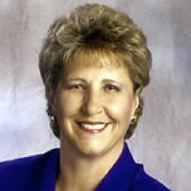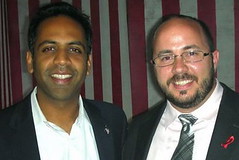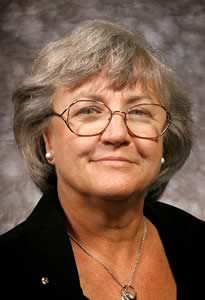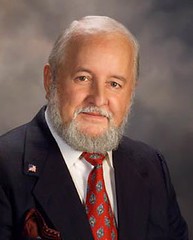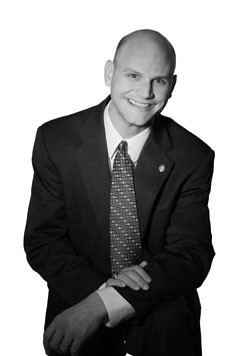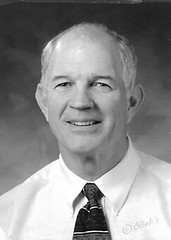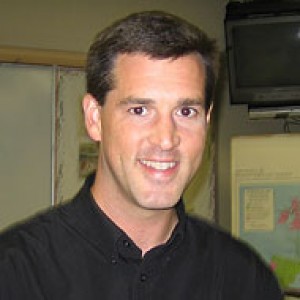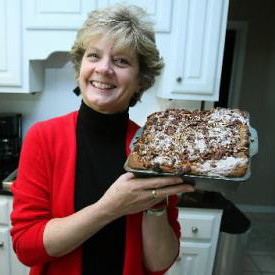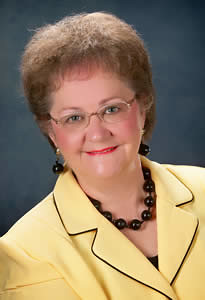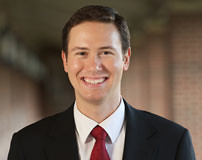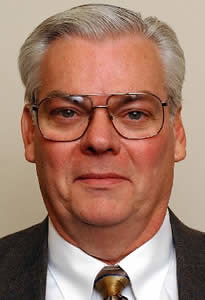We all know how important it is that Democrats re-capture the Michigan State Senate next year. If they take the Senate and hold the Governorship, they will have complete control over the redistricting process. Bill Ballenger, editor of Inside Michigan Politics, says “Democrats look poised to pick up at least 3 seats” next year. To take control, we only need to win 4 Republican seats. Democrats have not controlled the State Senate since 1982. Below I have all 38 Senate seats listed, with the name of its Senator, the party, whether or not it will be OPEN next year, and a brief description of the district. I also give a brief preliminary paragraph handicapping the race.
Then I give the 2008 Presidential Result in that District. Remember that the 2008 resutl is sort of a “High Water Mark” here. Note that I didn’t calculate the Presidential Vote for the 5 Detroit districts because this would require going precinct by precinct which would have taken days. They are all at least 80% Obama, many are more than 90% Obama.
I then included all of the announced candidates for the races, with links to their websites or sources. I then list potential candidates for each race, usually State Representatives or other local officeholders. Finally, I offer a Charlie Cook style rating: Safe, Likely, Leans or Tossup. The Senator’s name links to their website, where you can find a map of his or her district.
I realize that this is a lot of text, so for those who don’t want to read the entire thing, I added all my ratings seperately at the bottom of the diary.
Updated to include the announced Candidacies of Fmr. Rep. John Stewart (D) in the 7th (h/t Sean Fitzpatrick) and Rep. Mary Valentine (D) in the 34th.
District 1– Hansen Clarke (D) OPEN Easten Detroit; Downtown
Hansen Clarke (AKA “The man who kicked Ann Coulter’s Ass”) is term limited next year. It’s a shame, because Clark has been one of my favorite Senators, and even one of my favorite politicians. He recently donated his hair to a nine year old burn victim http://www.myfoxdetroit.com/dp… and is a tireless advocate for under-represented and underpriveledged Americans.
Announced Candidates:
Potential Candidates:
Coleman Young II (D), State Rep. (2006- ) 2009 Candidate for Detroit Mayor
Fred Durhal, Jr. (D) State Rep. (2002-2003, 2008- )
Betty Cook Scott (D) State Rep. (2004- )
Rating: Safe Democrat
District 2 Martha G. Scott (D) OPEN North Detroit, Hamtrack, Grosse Cities.
Martha Scott, who was one of Carolyn Cheeks Kilpatrick’s 2008 primary challengers, is term limited.
Announced Candidates:
Potential Candidates:
LaMar Lemmons (D) State Rep. (2004- )
Bill McConico (D) State Rep. (2000-2006), 2006 Candidate
Virgil Smith (D) State Rep. (2002-2008)
Bert Johnson (D) State Rep. (2006- )
Rating: Safe Democrat
District 3 Irma Clark-Coleman (D) OPEN Central Detroit, Dearborn
This district includes Dearborn, so there is the potential for this district to elect an Arab-American to the Senate.
Announced Candidates:
Potential Candidates:
Morris Hood, Jr. State Rep. (2002-2008)
Keith Williams (D) Wayne County Commission (2003- )
Rating: Safe Democrat
District 4 Buzz Thomas (D) OPEN North and Central Detroit
Another very good legislator who is term limited this year, although I’m keeping my fingers crossed that John Conyers will retire so that Thomas can replace him in Congress.
Announced Candidates:
Potential Candidates:
George Cushingberry (D) State Rep. (2004- )
Virgil Smith (D) State Rep. (2002-2008)
Keith Williams (D) Wayne County Commission (2003- )
Rating: Safe Democrat
District 5 Tupac Hunter (D) West Detroit, Dearborn Heights, Inkster
Hunter will be fine in this majority black district, however term limited State Rep. Gabe Leland may challenge Hunter. Leland’s father, Burt, represented this district prior to Hunter for decades.
Rating: Safe Democrat
District 6 Glenn Anderson (D) Livonia, Westland, Redford, Garden City
Senator Anderson won this historically Republican suburban Wayne County district in 2006, defeating Republican Sen. Laura Toy. He is favored to win re election, but former Rep. John Pastor (R) of Livonia could make it competitive.
Presidential Results: 57.8 – 40.4 Obama
Rating: Likely Democrat
District 7 Bruce Patterson (R) OPEN Canton, Northville, Plymouth, Trenton
Republican Pruce Patterson barely held on in 2006 against Democrat Mark Slavens in 2006 in this L-shaped suburban Wayne County district. Democrats now hold every State House District that is wholly or partially in this district. Mark Slaven’s wife Dian won the last remaining Republican held district last year, and Obama won this district comfortably. This district will be one of the most competitive and expensive districts in the state. If Democrats want to retake the Senate, this is a district that they almost have to win. Former Republican-turned Democrat State Representative John Stewart, who served was an R while serving in the State House from 2000-2006 and who switched parties in 2007, is running. The fact that he represented a 3rd of this district, and was a Republican, makes him a top tier candidate. h/t Sean Fitzpatrick
Presidential Results: 54.7 – 43.7 Obama
Announced Candidates:
John Stewart (D) Former Republican State Rep. (2000-2006) bin/cfr/com_det.cgi?com_id=514363
Potential Candidates:
Marc Corriveau (D) State Rep. (2006- )
Kathleen Law (D) State Rep. (2002-2008)
Mark Slavens (D) 2006 Candidate
Phillip LaJoy (R) State Rep. (2002-2008)
Rating: Tossup
District 8 Ray Basham (D) OPEN
Romulus, Taylor, Lincoln Park, Allen Park, Riverview, Wyandotte
The Democrat will be strongly favored in this suburban Wayne County district that is located south of Detroit.
Presidential Results: 64.6 – 33.4 Obama
Announced Candidates:
Potential Candidates:
Hoon Yung-Hopgood (D) State Rep. (2002-2008)
Barbarah Farrah (D) State Rep. (2002-2008)
Ed Clemente (D) State Rep. (2004- )
Rating: Safe Dem
District 9 Dennis Olshove (D) OPEN Warren, Eastpointe, Fraser, St. Clair Shores
This district is Democratic but mostly socially conservative one located in southern Macomb County. It is, along with the 10th District, the home of the “Reagan Democrats,” who also voted strongly for Obama. The Democrat is favored here.
Presidential Results: 58.3 – 39.6 Obama
Announced Candidates:
Potential Candidates: Lisa Wojno (D) State Rep. (2002-2008)
Frank Accavitti (D) State Rep. (2002-2008)
Jack Brandenburg (R) State Rep. (2002-2008)
Rating: Likely Dem
District 10 Mickey Switalksi (D) OPEN
Sterling Heights, Utica, Roseville, Clinton, Mount Clemens
Although slightly less Democratic than the 9th, this district still favors Democrats. And like the 9th, a conservative Democrat should have no problem winning this district. Switalski announced earlier this year that he would challenge Rep. Sandy Levin in the 12th Congressional district.
Presidential Results: 55.5 – 42.7 Obama
Announced Candidates:
Potential Candidates:
Steve Bieda (D) State Rep. (2002-2008)
Fred Miller (D) State Rep. (2004- )
Tory Rocca (R) State Rep. (2004- )
Rating: Leans Democrat
District 11 Alan Sanborn (R) OPEN
Northern Macomb County
This district is very conservative, but if nutjob crazy Leon Drolet gets the Republican nomination, a Democrat would have a chance here. Still, the Republican should be favored.
Presidential Results: 50.6 – 47.7 McCain
Announced Candidates: Leon Drolet
Potential Candidates:
Kim Meltzer (R) State Rep. (2004- )
Brian Palmer (R) State Rep. (2002-2008)
Rating: Likely Republican
District 12 Mike Bishop (R) OPEN
Pontiac, Rochester, Auburn Hills, North East Oakland County
Majority leader Bishop is term limited in this swing district in Oakland County. Although President Obama won this district, I’m not extremely optimistic about picking this one up because Obama’s margin of victory was almost entirely from majority black Pontiac, where turnout won’t be as high next year.
Presidential Results: 52.5 – 46.0 Obama
Announced Candidates:
Potential Candidates:
Tim Melton (D) State Rep. (2006 – )
Tom McMillan (R) State Rep. (2008- )
Rating: Leans Republican
District 13 John Pappageorge (R)
Royal Oak, Madison Heights, Berkley, Troy, Bloomfield, Birmingham
In 2006, State Rep. John Pappageorge beat Andy Levin (son of Sandy Levin) by less than 1,000 votes. Many Democrats blamed Levin’s loss on Kyle McBee, the Green Party candidate who took 3,129 votes, more than 3 times Pappageorge’s margin of victory. Democrats will challenge Pappageorge again, although it isn’t clear whether Levin will try again, or a State Representative like Marie Donigan will give it a shot.
Presidential Results: 53.7 – 44.8 Obama
Announced Challengers:
Potential Challengers:
Andy Levin (D) 2006 nominee
Marie Donigan (D) State Rep. (2002- )
Rating: Tossup
District 14 Gilda Jacobs (D) OPEN
Farmington Hills, Southfield, Huntington Woods, Oak Park, Ferndale
This district is probably the most liberal district in Michigan, although not the most Democratic. Rep. Gilda Jacobs is term limited, and while the all three of the State Reps. in the district are freshmen, whoever wins the Dem nomination will win.
Presidential Results: 74.6 – 24.3 Obama
Announced Candidates:
Potential Candidates:
Rep. Ellen Cogen Lipton (D) (2008- )
David Coulter (D) Oakland County Commission (2002- )
Helaine Zack (D) Oakland County Commission (2002- )
Rating: Safe Democrat
District 15 Nancy Cassis (R) OPEN
Novi, South Lyon, West Bloomfield Township, Northville
I was shocked when I calculated the results for this district. A decade ago, this was at least one of, if not the most Republican area in Michigan. Western Oakland County being so Republican is the reason that we have Thad McCotter and Craig DeRoche, and yet this district voted for Barack Obama. Even the city of Novi voted for him. And better yet, he won by more than 3,000 votes! Still, locally we have a while to go before a Democrat can represent Western Oakland County in the State Legislature. I’m not very keen on this district as a possible pickup in ’10.
Presidential Results: 50.3 – 48.2 Obama
Announced Candidates:
Potential Candidates:
Craig DeRoche (R) State Rep. (2000-2006)
David Law (R) State Rep. (2004-2008)
Rating: Likely Republican
District 16 Cameron Brown (R) OPEN, Lenawee, Branch, Hillsdale, and St. Joseph Counties
I doubt this district will be competitive, unless State Rep. Dudley Spade (D) runs, but even then a Republican like Bruce Caswell starts off with an advantage.
Presidential Results: 49.8 – 48.3 McCain
Announced Candidates:
Potential Candidates:
Dudley Spade (D) State Rep. (2004- )
Bruce Caswell (R) State Rep. (2002-2008)
Rick Schaffer (R) State Rep. (2002-2008)
Rating: Likely Republican
District 17 Randy Richardville (R) Monroe County, South Washtenaw, East Jackson
Not only the most gerrymandered, but also one of the most closely divided districts in Michigan, this one will likely be home to another competitive race in 2010. The Washtenaw County portion of this district favors Dems, while the Jackson county portion favors Republicans and Monroe county is a swing region. In fact, the Presidential results here are almost exactly what President Obama got nationwide, giving it a 2008 PVI of EVEN. Unfortunately, our bench in this district isn’t the greatest, with our strongest possible candidate running for Secretary of State. Still, State Rep. Kate Ebli might be able to beat Richardville.
Presidential Results: 52.7 – 45.6 Obama
Announced Challengers:
Potential Challengers:
Kate Ebli (D) State Rep. (2005- )
Rating: Leans Republican
District 18 Liz Brater (D) Open Washtenaw County, Ann Arbor
One of the most Democratic districts in Michigan and the home of the University of Michigan. The Democratic bench in this district is quite deep. Any Democrat is safe here.
Presidential Results: 73.7 – 26.2 Obama
Announced Candidates:
Potential Candidates:
John Hieftje (D) Mayor of Ann Arbor
Rebekah Warren (D) State Rep. (2006- )
Pam Byrnes (D) State Rep. (2004- )
Chris Kolb (D) State Rep. (2000-2006)
Rating: Safe Democrat
District 19 VACANT (D) Calhoun County (Battle Creek) and most of Jackson County
This is the Senate seat that Mark Schauer left vacant when he moved up to Congress last year. It is usually a swing district, although President Obama won it with votes to spare. Because this seat is vacant, there will be a special election to fill it later this year. The Primary will be August 4th and the General on November 9th.
The Democratic candidates are State Rep. Martin Griffin of Jackson, and Sharon Reiner, who ran for congress in 2006 and 2008, narrowly losing to Tim Walberg and then losing badly in the primary to Mark Schauer. Griffin is backed by the State Democratic Party and should win the Primary. The Republican candidates are State Rep. Mike Nofs of Battle Creek and Sandstone Township Supervisor C. James Wellman. Nofs, who is a moderate and popular in the Battle Creek area, should win the primary.
The fact that 1. Nofs is very moderate 2. He’s very well known and liked in the Battle Creek area and 3. This will be a low turnout special election makes this a tough race for us. Both parties with certainly spend a lot of money here. Martin Griffin is from the Jackson area, which is an advantage, as Mark Schauer lost Jackson County in 2002 when he first ran for the State Senate. If we lose this race it will make it that much more difficult to retake the Senate, so in some ways, whether or not Democrats can gain the trifecta and control redistricting depends on this race.
Presidential Results: 52.7 – 45.6 Obama
Candidates:
Martin Griffin (D) State Rep. (2006- )
Sharon Reiner (D)
Mike Nofs (R) State Rep. (2002-2008)
C. James Wellman (R) Sandstone Township Board Memeber
Rating: Tossup
District 20 Thomas George (R) OPEN Kalamazoo County, part of Van Buren County
Tom George, who is running for Governor, will be vacating the 2nd most Democratic seat currently held by a Republican, going by Obama’s winning percentage. The Republican field is already starting to shape up, with former State Rep. Lawrence Wenke, who’s district included part of Western Kalamazoo County, and current State Rep. Tonya Schuitamaker are both running. Schuitamaker’s base is Van Buren County, which she represents. This district only includes two townships in Van Buren, so she would probably be at a disadvantage against Wenke in the primary. Still, Republicans would do well to nominate someone from the city of Kalamazoo or it’s suburbs, and both Wenke and Schuitamaker are from the rural parts of the district.
Democrats have a few good potential candidates. Former state Rep. and 2006 candidate Alex Lipsey, State Rep. Robert Jones, or Kalamazoo County Commission Chairman David Buskirk.
Presidential Results: 58.6 – 39.7 Obama
Announced Candidates:
Lawrence Wenke (R) State Rep. (2002-2008)
Tonya Schuitamaker (R) State Rep. (2004- )
Potential Candidates:
Alex Lipsey (D) State Rep. (2000-2006)
Robert Jones (D) State Rep. (2006- )
David Buskirk (D) Kalamazoo County Commissioner; Chairman
Rating: Tossup
District 21 Ron Jelinek (R) OPEN Berrien, Cass and Van Buren Counties
A historically Republican area, President Obama did very well here. This area is home to a lot of moderate Republicans (Fred Upton is from this area), and Berrien County is home to a lot of African-Americans. Democrats have a very weak bench here, so don’t expect a win here.
Presidential Results: 52.1 – 46.3 Obama
Announced Candidates:
Potential Candidates:
Judy Truesdell (D) 2006 and 2008 Candidate for State House
John Proos (R) State Rep. (2002- )
Rating: Leans Republican
District 22 Valde Garcia (R) OPEN Livingston, Shiawassee, and Southern Ingham Counties
Livingston County is one of the most Republican Counties in Michigan. You can be sure that another conservative “family values” Republican will be elected to replace Senator Garcia.
Presidential Results: 52.4 – 45.8 McCain
Announced Candidates:
Potential Candidates:
Joe Hune (R) State Rep. (2002-2008)
Chris Ward (R) State Rep. (2002-2008)
Rating: Safe Republican
District 23 Gretchen Whitmer (D) Ingham County (Lansing)
Gretchen Whitmer will be safe if she runs for re-election. If she runs for Attorney General, as many expect her to, there is a strong bench of Democrats in the lansing area to take her place.
Presidential Results: 67.2 – 31.3 Obama
Rating: Safe Democrat
District 24 Patricia Birkholz (R) OPEN Allegan, Barry, and Eaton Counties
Although Eaton county showed an impressive swing towards President Obama, the rest of this district, especially heavily Dutch Allegan, is still strongly Republican.
Presidential Results: 50.5 – 47.6 McCain
Announced Candidates:
Potential Candidates:
Brian Calley (R) State Rep. (2006- )
Rick Jones (R) State Rep. (2004- )
Fulton Sheen (R) State Rep. (2002-2008)
Rating: Safe Republican
District 25 Judson Gilbert (R) OPEN Lapeer and St. Clair Counties
Lapeer and St. Clair Counties are mostly suburban/exurban areas north of Detroit. There is also quite a bit of rural farmland and the medium sized city of Port Huron. A democrat could win here, expecially moderate like John Espinoza, although he doesn’t actually live in the district. The Republicans have a deep bench here, and I’m not sure whether or not the State Democratic party will decide to put money here.
Presidential Results: 49.2 – 48.6
Announced Candidates:
Potential Candidates:
John Espinoza (D) State Rep. (2004- )
Phillip Pavlov (R) State Rep. (2004- )
John Stahl (R) State Rep. (2002-2008)
Rating: Leans Republican
District 26 Deb Cherry (D) OPEN North and East Genesee County, Central Oakland County, Waterford
I don’t know why, but for some reason Republicans gave this suburban Flint area district an arm that reaches into central Oakland County, and they actually used touch-point contiguity to connect it to Waterford Township. Maybe it was to make this district more Republican, although Waterford voted easily for Obama. This district was held by Lt. Gov. John Cherry, and is now held by his sister, Deb. It’s comfortably Democratic, but rising star, moderate African-American Republican Paul Scott could concievably give a Democrat a run for their money.
Presidential Results: 55.8 – 42.4 Obama
Announced Candidates:
Potential Candidates:
Richard Hammel (D) State Rep. (2006- )
Jim Slezak (D) State Rep. (2008- )
Ted Hammon (D) State Rep. (2006-2008)
Fran Amos (R) State Rep. (2002-2008)
Paul Scott (R) State Rep. (2008- )
Rating: Leans Democrat
District 27 John Gleason (D) Flint, South-West Genesee County
The other Genessee County District, this one is much more Democratic. It includes the city of Flint and other very Democratic areas west of the city. If Gleason primaries Dale Kildee, there is a big Democratic bench here.
Presidential Results: 68.8 – 29.7 Obama
Rating: Safe Democrat
District 28 Mark Jansen (R) Kent County, suburban Grand Rapids
The 28th District is very strangely shaped. It skirts around the city of Grand Rapids but includes conservative suburbs like Wyoming. Mark Jansen should have not trouble winning re-election.
Presidential Results: 55.9 – 42.5 McCain
Rating: Safe Republican
District 29 Bill Hardiman (R) OPEN Grand Rapids, Kentwood
This is another district that we almost must win if we want to retake the senate. It is the most Democratic district currently held by a Republican, going by Barack Obama’s winning margin. It is basically all of the city of Grand Rapids plus a few suburbs. Both Republicans and Democrats have decent benches here, but Democrats have been making gains lately (we won a state house seat in 2006). I think that at the end of the day, the Democrat will win this district.
Presidential Results: 59.1 – 39.3 Obama
Announced Candidates:
Potential Candidates:
Michael Sak (D) State Rep. (2002-2008)
David LaGrand (D) Grand Rapids City Commissioner and 2006 Candidate
George Heartwell (D) Grand Rapids Mayor
Carol Hennessy (D) Minority Vice-Chair, Kent County Commission
Dave Hildenbrand (R) State Rep. (2004- )
Glenn Steil (R) State Rep. (2002-2008)
Justin Amash (R) State Rep. (2008- )
Jerry Kooiman (R) State Rep. (2000-2006)
Rating: Tossup
District 30 Wayne Kuipers (R) OPEN Ottawa County
This district is home to Ottawa County, one of the fastest growing and most Republican counties in Michigan. Although, like with the South, as the population grows, so does the Democratic performance. I’d estimate we may start winning this district by the 2020’s, but until then it will remain safely in Republican hands.
Presidential Results: 61.0 – 37.4 McCain
Announced Candidates:
Potential Candidates:
David Agema (R) State Rep. (2006- )
Arlan Meekhof (R) State Rep. (2006- )
Rating: Safe Republican
District 31 James Barcia (D) OPEN Sanilac, Huron, Tuscola, Bay, and Arenac Counties
Former Congressman James Barcia is term limited in this big district which includes the “Thumb” region and wraps around Saginaw Bay, including Bay City. It’s relatively Democratic, although not overwhelmingly. Democrats have a good bench, and State Rep. Jeff Mayes would be a big improvement over the moderate to conservative Barcia.
Presidential Results: 51.8 – 46.3 Obama
Announced Candidates:
Potential Candidates:
Jeff Mayes (D) State Rep. (2004- )
Terry Brown (D) State Rep. (2006- )
John Espinoza (D) State Rep. (2004- )
Rating: Leans Democrat
District 32 Roger Kahn (R) Saginaw and Gratiot Counties
In 2006, Roger Kahn (AKA Kaaahn!!) won this seat by only 450 votes. He’s had sort of a rough first term, alledgedly getting into a physical altercation with a 72 year old female Senator Irma Clark-Coleman (D) of Detroit. The incident was so bizarre that I think that I should post here excerpts from Clark-Coleman’s letter to Majority leader Bishop:
I submit this letter as a formal complaint against the State Senator
from the 32nd District who is a menace to the state legislature. He
perpetrated petulant and violent behavior toward me following a Senate
Appropriation committee meeting yesterday afternoon in the Capitol
building. I ask that you sanction him for conduct unbecoming of an
elected official. I am fearful that given the opportunity, this
legislator would continue to use physical intimidation to reinforce his
policy positions.
He accosted me inside of the main elevator. He rushed at me as if he
were going to strike me in the face after I expressed my great
displeasure with the committee’s approval of the Senate substitute for
HB 4436, which decimates Wayne County’s and Detroit’s ability to provide
mental and medical treatment for poor and uninsured residents…
The Senator from Saginaw charged at me like a bull while we were both
confined in a 6 x 6 elevator. His hysterical behavior startled
citizens who like me were simply trying to leave the Capitol building.
Everyone looked on in horror until the good Senator from the 13th
District blocked his advance to my side of the elevator car.
As the doors opened on the ground floor, the Senator from Troy took me
by the elbow and escorted me out of harm’s way. Despite my exit, the
legislator from the 32nd District continued his verbal assault. His
bellowing startled the Kentwood Senator and the state Budget Director
who were conversing at the visitor’s desk. Both gentlemen looked up in
utter amazement.
Never, in my twelve years as a state legislator, seven years as a member
of the Detroit Board of Education, and thirty years as a Wayne County
employee have I been attacked for my policy positions. I commend Troy’s
best for his quick action to shield me from my aggressor who had lost
control of his temper and his ability to reason.
Senator Kahn denies this, although it’s pretty crazy if true. That, plus the Democratic nature of this district means he should be in for a tough race next year.
Presidential Results: 56.9 – 41.5 Obama
Announced Challengers:
Potential Challengers:
Andy Colouris (D) State Rep. (2006- )
Carl Williams (D) State Rep. (2000-2006) and 2006 Candidate
Rating: Tossup
District 33 Alan Cropsey (R) OPEN Clinton, Montcalm, Isabella, and Ionia Counties
Cropsey, who has always been to conservative for his district, is term limited. Based mostly on his strength in Isabella County (home to CMU), Barack Obama won this district. We also picked up a State House seat within this district last year, and we will probably pick up another one next year. Still, our bench is not very strong here. Democratic turnout may not be a strong next year, either, so I’m cautious about this district.
Presidential Results: 50.7 – 47.4 Obama
Announced Candidates:
Potential Candidates:
Mike Huckleberry (D) State Rep. (2008- ), 2004 and 2006 candidate for Congress
Bill Caul (R) State Rep. (2004- )
Paul Opsommer (R) State Rep. (2006- )
Rating: Leans Republican
District 34 Gerald VanWoerkom (R) OPEN Muskegon, Oceana, Newaygo, and Mason Counties
It’s difficult to tell this far out, but I think that if we win any seats next year, this is our best shot. Moderate Muskegon Republican Gerald VanWoerkom is retiring, and the Republican candidate to replace him looks to be State Rep. Geoff Hansen, although former State Rep. David Farhat it “thinking about it.”
Either way, we start out with an advantage. Unlike VanWoerkom, who represented Muskegon County in the House, Hansen hails from the rural Northern portion of the district. David Farhat, on the other hand, represented the same district as VanWoerkom. That is, until he was spanked in 2006 by Dem Mary Valentine (he lost 56-44). Mary Valentine has announced that she is running. Her popularity in the more suburban and rural part of the district and the fact that Farhat is thought to be somewhat corrupt, and Hansen has no base in Muskegon tells me that this one looks like a pickup.
Presidential Results: 58.3 – 40.0 Obama
Announced Candidates:
Mary Valentine (D) State Rep. (2006- )
Geoff Hansen (R) State Rep. (2004- )
Potential Candidates:
Mary Valentine (D) State Rep. (2006- )
Doug Bennett (D) State Rep. (2004- )
Julie Dennis (D) State Rep. (1998-2004) and 2006 Candidate
David Farhat (R) State Rep. (2002-2006)
Rating: Leans Democrat
District 35 Michelle McManus (R) OPEN Leelanau, Benzie, Manistee, Kalkaska, Wexford, Missaukee, Roscommon, Lake, Osceola, Clare, and Mecosta Counties
I consider Michelle McManus to be Michigan’s version of Michelle Bachmann. She’s crazy, loud, and extremely conservative. Luckily, she’s term limited. Unluckily, she’s running for Secretary of State. I doubt, however, that she’ll make it out of the Primary. Obama won her district, and we picked up a State House seat, but our bench is weak in the North-Western Lower Peninsula area.
Presidential Results: 49.3 – 49.0 Obama
Announced Candidates:
Potential Candidates:
Darwin Booher (R) State Rep. (2004- )
David Palsrok (R) State Rep. (2002-2008)
Rating: Leans Republican
District 36 Tony Stamas (R) OPEN Alpena, Alcona, Iosco, Ogemaw, Midland, Gladwin, Crawford, Montmorency, Oscoda, and Otsego Counties
Although Republican leaning nationally, this is a swing district in local in statewide races. The southernmost county, Midland, favors Republicans. In fact, the Republicans intetionally drew the Democratic northern Counties, especially Alpena, with Midland to create a Republican district. In 2002, Alpena Democrat Andy Neumann ran against Midland Republican Tony Stamas, with Stamas prevailing narrowly. Stamas in now term limited and Neumann, who is a State Representative, is “Strongly Leaning Towards running,” also likely to run is State Rep. Joel Sheltrown (D), who is more moderate than Neumann, and also not from the Alpena area, but Iosco County in the center of the district. I think that Sheltrown would be a stronger candidate, but the primary will be nasty. The Republican candidate will probably be former State Rep. John Moolenaar of Midland.
Presidential Results: 49.9 – 48.1 McCain
Announced Candidates:
Potential Candidates:
Andy Neumann (D) State Rep. (1998-2002, 2008- )
Joel Sheltrown (D) State Rep. (2004- )
John Moolenaar (R) State Rep. (2002-2008)
Rating: Tossup
District 37 Jason Allen (R) OPEN Grand Traverse, Antrim, Charlevoix, Emmett, Cheboygan, Presque Isle, Mackinac, and Chippewa Counties
This is the most Republican Northern Michigan District. I starts at Traverse City, then jumps the Straits of Mackinac and takes in Mackinac and Chippewa Counties in the U.P., including Sault Ste. Marie. The Traverse City area has quite a few Republicans to replace Senator Allen, but Emmett, Mackinac, and Chippewa Counties, also a Republican area, are represented by State Rep. Gary McDowell (D). McDowell is term limited and I could concievably see him winning this district, although it would be an uphill climb.
Presidential Results: 50.8 – 47.5
Announced Candidates:
Potential Candidates:
Gary McDowell (D) State Rep. (2004- )
Howard Walker (R) State Rep. (2002-2008)
Rating: Leans Republican
District 38 Mike Prusi (D) OPEN Keweenaw, Houghton, Ontonagon, Gogebic, Baraga, Iron, Dickinson, Marquette, Menominee, Delta, Alger, Schoolcraft, and Luce Counties.
My home district! I’ll be sad to see Prusi go, but it’s more important that we get a progressive Dem like him to take his place. The Democratic bench is deep, the Republican one, not so much. The Presidential results are a bit misleading, as the Democratic baseline here is far higher than President Obama’s total (which was still a comfortable win). The most likely candidate is probably former State Rep. Tom Casperson, although the spanking he received at the Hands of Bart Stupak last year make keep him out of politics forever. If he doesn’t run, it’s likely Dem. If he does, it’s leans Dem. Democrats hold every house seat in this district, and other than Casperson, we have for years, so we’ve got a very strong bench. The two progressive Dems, Steve Lindberg and fmr. Rep. Steve Adamini are from Marquette, while the more conservative Reps are Mike Lahti of Houghton County and Judy Nerat of Menominee County.
Presidential Results: 52.5 – 45.5
Announced Candidates:
Potential Candidates:
Steve Lindberg (D) State Rep. (2006- )
Mike Lahti (D) State Rep. (2006- )
Steve Adamini (D) State Rep. (2000-2006), 2008 Candidate for Marquette County Prosecutor, Northern Michigan University Board of Trustees
Judy Nerat (D) State Rep. (2008- )
Tom Casperson (R) State Rep. (2002-2008) and 2008 Candidate for Congress
Joel Westrom (R) First District GOP chairman and 2006 Candidate for State House
Rating: Leans Democrat
And for those who skipped some of that, here’s my summary. Republican seats are bold and italic
Safe Democrat Seats
District 1 (OPEN)
District 2 (OPEN)
District 3 (OPEN)
District 4 (OPEN)
District 5 Hunter
District 8 (OPEN)
District 14 (OPEN)
District 23 (OPEN)
District 27 Gleason
Likely Democrat Seats
District 6 Anderson
District 9 (OPEN)
Leans Democrat Seats
District 10 (OPEN)
District 26 (OPEN)
District 31 (OPEN)
District 34 (OPEN)
District 38 (OPEN)
Tossup Seats
District 7 (OPEN)
District 13 Pappageorge
District 19 VACANT
District 20 (OPEN)
District 29 (OPEN)
District 32 Kahn
District 36 (OPEN)
Lean Republican Seats
District 12 (OPEN)
District 17 Richardville
District 21 (OPEN)
District 25 (OPEN)
District 33 (OPEN)
District 35 (OPEN)
District 37 (OPEN)
Likely Republican Seats
District 11 (OPEN)
District 15 (OPEN)
District 16 (OPEN)
Safe Republican Seats
District 22 (OPEN)
District 24 (OPEN)
District 28 Jansen
District 30 (OPEN)
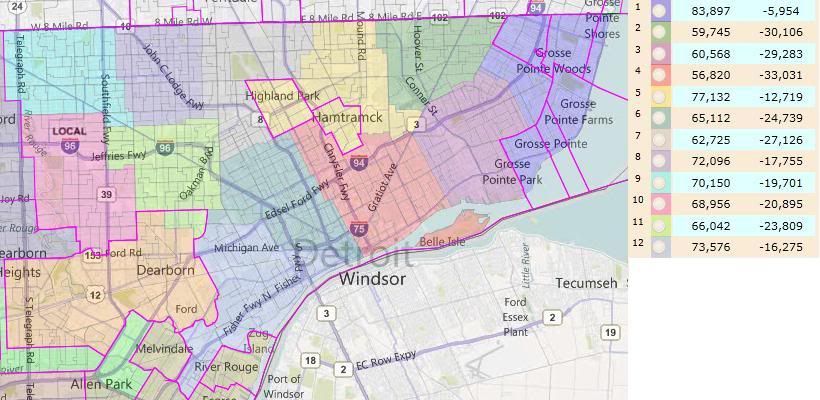
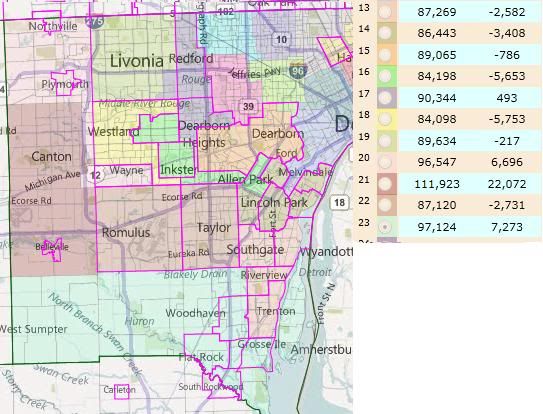
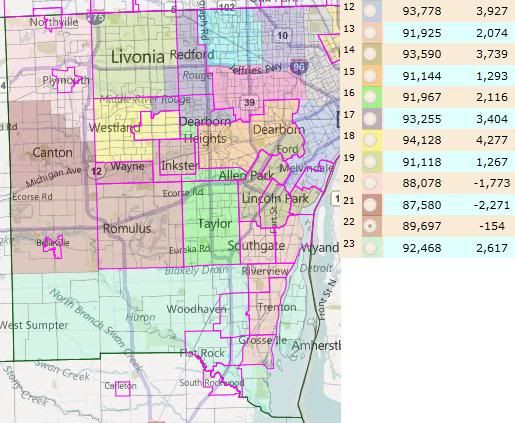
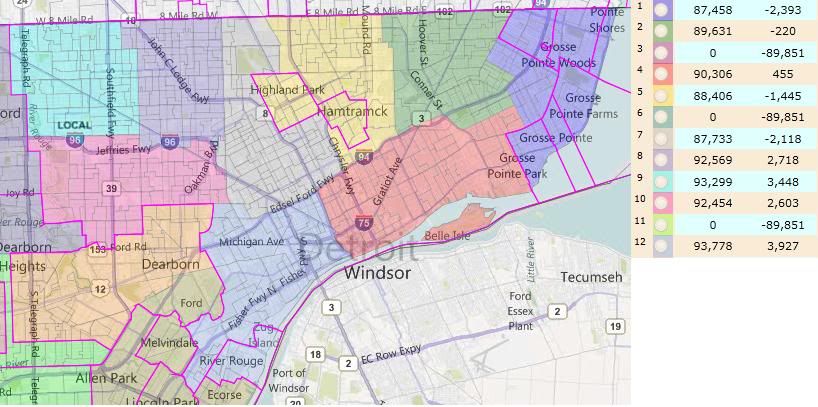

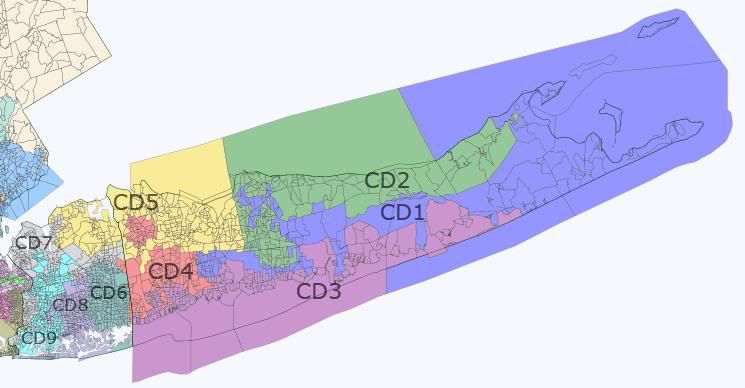
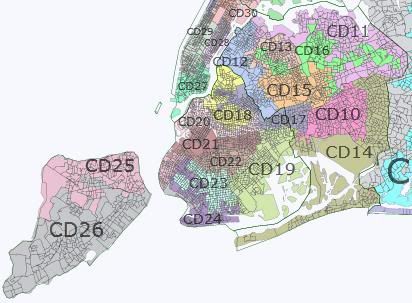

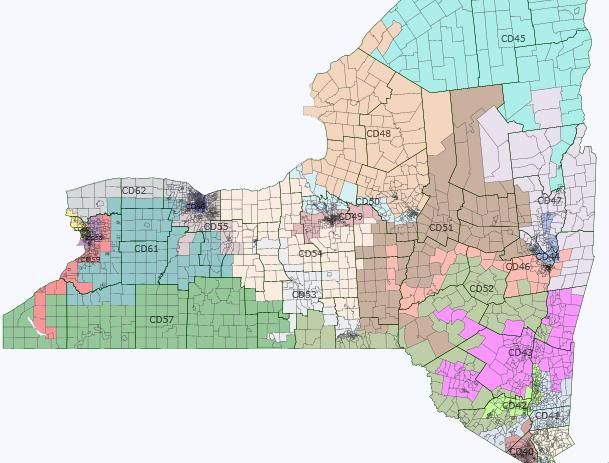

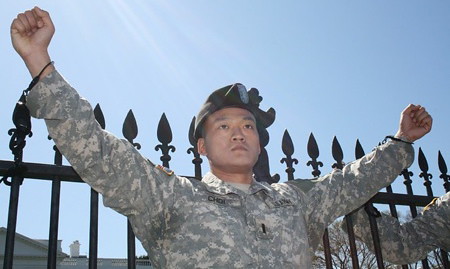 No seriously, thank you for Dan Choi.
No seriously, thank you for Dan Choi.